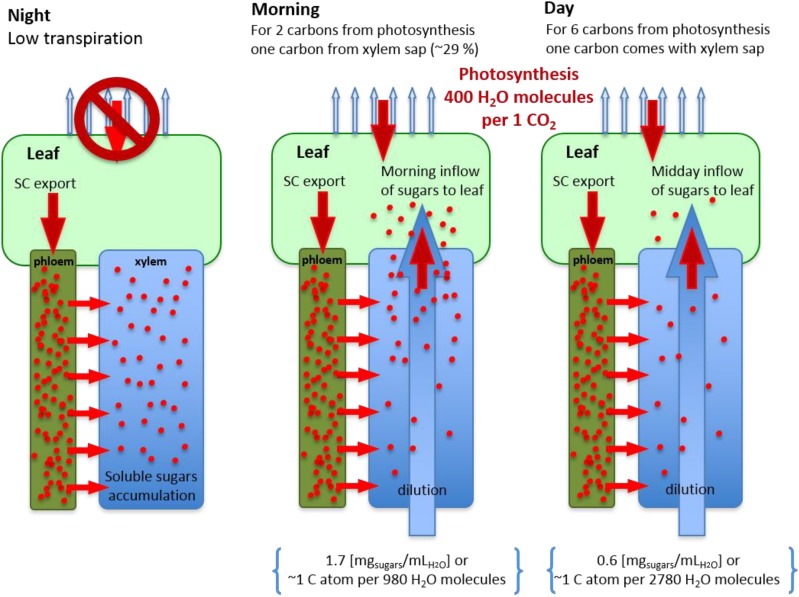Figure 7.
Proposed hypothesis that xylem offers a secondary pathway for sugar redistribution. Phloem leaks sugars to the apoplast, allowing for sugar accumulation in the xylem parenchyma cells and apoplast under low transpirational demand at night, which leads to overnight accumulation of SC in xylem sap of up to ∼2 mg mL−1. The sudden drop from 2 to 0.7 mg mL−1 following sunrise is due mostly to the transport of accumulated sugars via the transpirational stream to leaves. Assuming that 400 water molecules are exchanged for one CO2 molecule during assimilation, the resulting carbon-to-water ratio is 0.0025. In the sap, the sugar concentration of 2 mg mL−1 generates a carbon-to-water ratio of 0.0012. Thus, morning stream sap can constitute up to 29% of leaf carbon intake. During the day, this value would drop but still could contribute up to ∼13% of carbon uptake.

